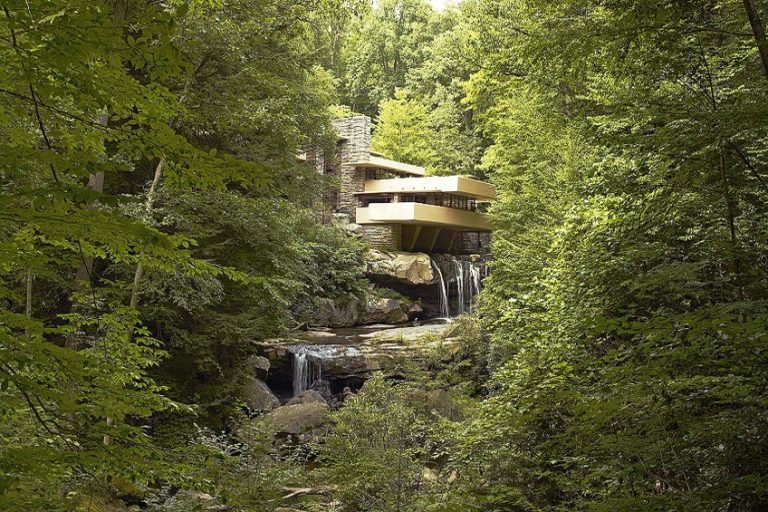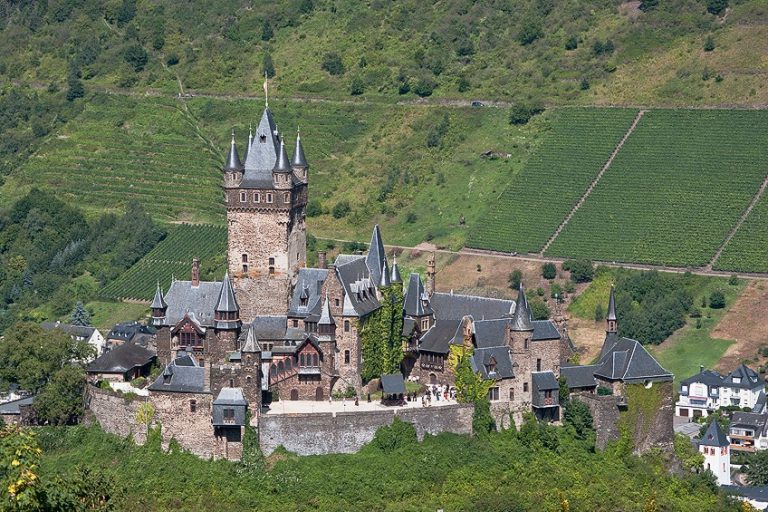Famous Fortresses – 10 Examples of Historical Engineering
Fortresses have stood as enduring symbols of strength, strategic prowess, and architectural ingenuity throughout history. From medieval castles perched atop rugged cliffs to imposing citadels guarding ancient cities, fortresses have played a pivotal role in shaping the course of warfare, politics, and culture. Each fortress tells a unique story, blending military might with artistic craftsmanship, offering a glimpse into the past while standing as a testament to human innovation and resilience. In this article, we delve into some of the world’s most renowned fortresses, exploring their histories, designs, and enduring legacies.
Table of Contents
- 1 What Is a Fortress?
- 2 The Top 10 Most Famous Fortresses in History
- 2.1 Masada (1st century BCE) – Israel
- 2.2 Great Wall of China (7th century BCE) – China
- 2.3 Tower of London (11th century) – England
- 2.4 Krak des Chevaliers (11th century) – Syria
- 2.5 Edinburgh Castle (12th century) – Scotland
- 2.6 Alcazar of Segovia (c. 12th or 13th century) – Spain
- 2.7 Malbork Castle (13th century) – Poland
- 2.8 The Alhambra (Mid-13th century) – Spain
- 2.9 Fortress of Suomenlinna (Mid-18th century) – Finland
- 2.10 Neuschwanstein Castle (19th century) – Germany
- 3 Frequently Asked Questions
What Is a Fortress?
A fortress is a fortified structure designed to withstand attacks and provide defense against enemy forces. Typically constructed in strategic locations such as mountain passes, river crossings, or near important trade routes, fortresses often feature thick walls, towers, and defensive systems like moats or battlements. These structures were essential in ancient and medieval times for protecting cities, castles, or key military positions from invading armies.
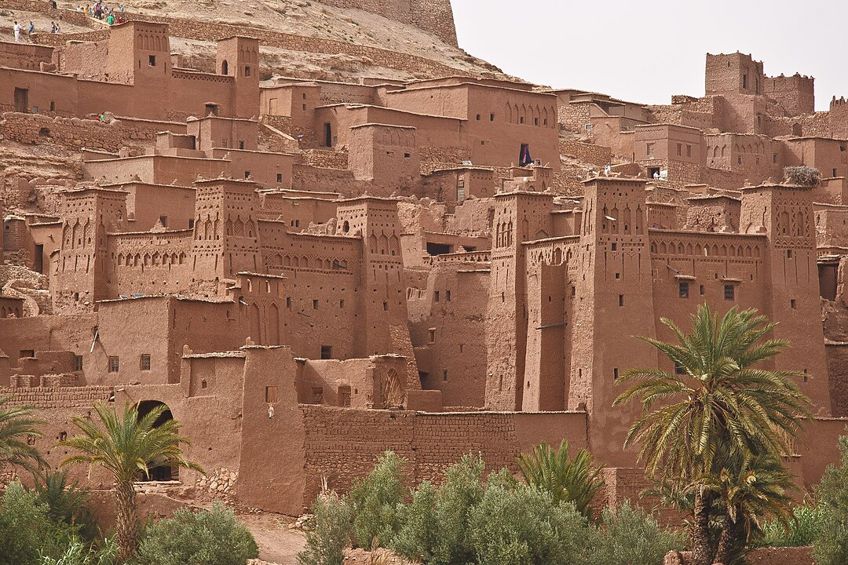
The architecture of a fortress is characterized by its emphasis on defensive capabilities. Walls are often constructed with durable materials such as stone or brick, designed to withstand siege tactics like battering rams or catapults. Towers offer vantage points for archers and guards, while gates are fortified with heavy doors, drawbridges, and portcullises to control access. Inner areas may include barracks, armories, and command centers, ensuring that the fortress can function autonomously during prolonged conflicts.
Overall, fortresses represent a fusion of military strategy and architectural innovation, embodying the complexities of warfare and defense throughout history.
The Top 10 Most Famous Fortresses in History
Explore the world of fortresses, where history, architecture, and strategic military planning converge to create awe-inspiring structures that stand as testaments to human ingenuity and resilience. From ancient strongholds like Masada and the Great Wall of China to medieval marvels such as Krak des Chevaliers and Malbork Castle, each fortress tells a story of defense, power, and cultural heritage. Journey through time and across continents as we delve into the fascinating world of fortifications, from towering stone walls to intricately designed bastions, revealing the secrets and splendors of these enduring symbols of strength and history.

Masada (1st century BCE) – Israel
| Dates | 1st century BCE |
| Location | Judean Desert, Israel |
| Materials | Stone, earth, and wood |
Masada, situated in Israel, is a remarkable fortress that dates back to the 1st century BCE. Perched atop a rugged plateau overlooking the Dead Sea, it served as a refuge and defensive stronghold for Jewish rebels against the Roman Empire. Its impressive fortifications, including walls, casemates, and a sophisticated water system, reflect the strategic military architecture of its time.
The siege of Masada and the tragic mass suicide of its defenders in 73-74 CE have become powerful symbols of Jewish resistance and resilience.
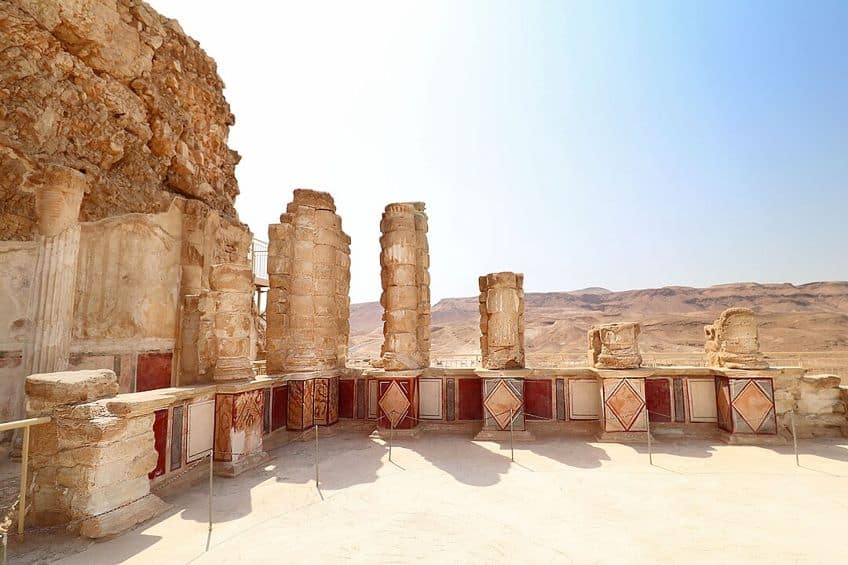
Great Wall of China (7th century BCE) – China
| Dates | 7th century BCE |
| Location | Northern China |
| Materials | Stone, brick, wood, and earth |
The Great Wall of China, a monumental structure stretching across northern China, is one of the world’s most iconic fortifications. Its construction began as early as the 7th century BCE and continued over centuries, with various dynasties adding to its length and complexity. Initially built for defense against nomadic invasions, the wall evolved into a network of fortifications, including walls, watchtowers, and beacon towers, spanning thousands of miles.
Today, it stands as a testament to ancient Chinese engineering prowess and strategic military planning.

Tower of London (11th century) – England
| Dates | 11th century |
| Location | London, England |
| Materials | Stone, wood, and metal |
The Tower of London, founded in the 11th century by William the Conqueror, is a multifaceted fortress and palace complex in London, England. Initially built to assert Norman power over London, it later served as a royal residence, treasury, and infamous prison.
The tower’s White Tower, iconic turrets, and historic role as a place of imprisonment, including for royalty like Anne Boleyn, contribute to its rich and sometimes dark history as a symbol of royal authority and intrigue.
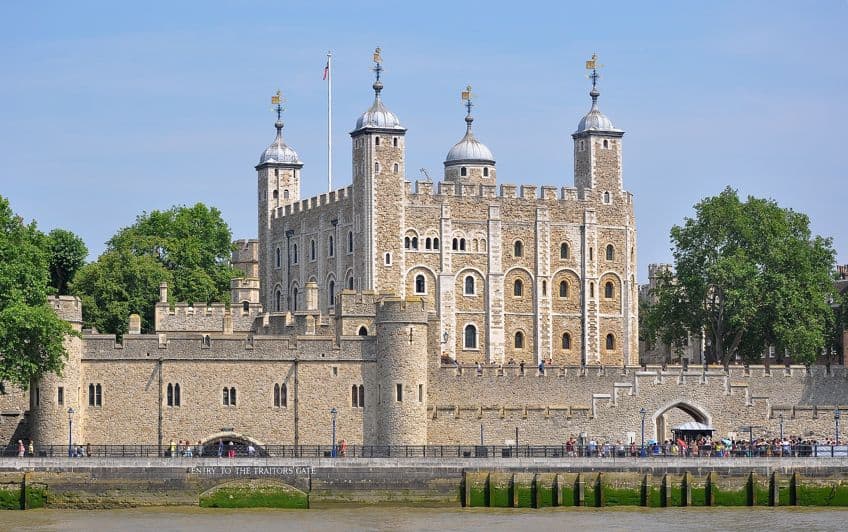
Krak des Chevaliers (11th century) – Syria
| Dates | 11th century |
| Location | Homs Governorate, Syria |
| Materials | Limestone, sandstone, and timber |
Krak des Chevaliers, dating back to the 11th century, is a formidable Crusader fortress located in Syria. Its strategic hilltop location and massive fortifications, including thick walls and multiple towers, made it virtually impregnable during medieval conflicts.
The castle’s well-preserved architecture, with its inner courtyards, halls, and defensive features, offers a glimpse into the military strategies and architectural achievements of the Crusader period in the Middle East.

Edinburgh Castle (12th century) – Scotland
| Dates | 12th century |
| Location | Edinburgh, Scotland |
| Materials | Stone, wood, and metal |
Edinburgh Castle, perched dramatically on Castle Rock, has been a symbol of Scottish power and resilience since its construction in the 12th century. Overlooking the city of Edinburgh, it has played a pivotal role in Scotland’s history, serving as a royal residence, military stronghold, and symbol of authority.
The castle’s strategic location, formidable defenses, and historic buildings, including St. Margaret’s Chapel and the Great Hall, make it a popular tourist attraction and a tangible link to Scotland’s past.

Alcazar of Segovia (c. 12th or 13th century) – Spain
| Dates | c. 12th or 13th century |
| Location | Segovia, Spain |
| Materials | Stone, brick, and mortar |
The Alcazar of Segovia, believed to have origins in the 12th or 13th century, is a captivating fortress and royal palace in Spain. Perched dramatically on a rocky outcrop, it combines elements of Moorish, Gothic, and Renaissance architecture, showcasing Spain’s diverse cultural influences.
The Alcazar’s majestic towers, courtyards, and ornate interiors, including the Hall of Kings and Throne Room, reflect its historical importance as a royal residence and symbol of Castilian power.

Malbork Castle (13th century) – Poland
| Dates | 13th century |
| Location | Malbork, Poland |
| Materials | Brick, stone, and timber |
Malbork Castle, constructed in the 13th century, stands as a stunning example of medieval brick Gothic architecture in Poland. Originally built by the Teutonic Order, it served as their headquarters and a formidable fortress against invading forces.
The castle’s massive walls, towers, and intricate detailing reflect the military and architectural prowess of the time, making it one of Europe’s largest brick castles and a UNESCO World Heritage site.

The Alhambra (Mid-13th century) – Spain
| Dates | Mid-13th century |
| Location | Granada, Spain |
| Materials | Stone, wood, and plaster |
The Alhambra, located in Granada, Spain, is a magnificent fortress complex dating back to the mid-13th century. It showcases exquisite Islamic architecture, with intricately carved stucco, delicate tilework, and serene gardens reflecting the harmony between art, architecture, and nature. The Alhambra served as a royal palace, citadel, and fortress, embodying the cultural and artistic achievements of Muslim Spain during the Nasrid dynasty.
Its Alcazaba fortress, Nasrid Palaces, and Generalife gardens are enduring legacies of Al-Andalus civilization.
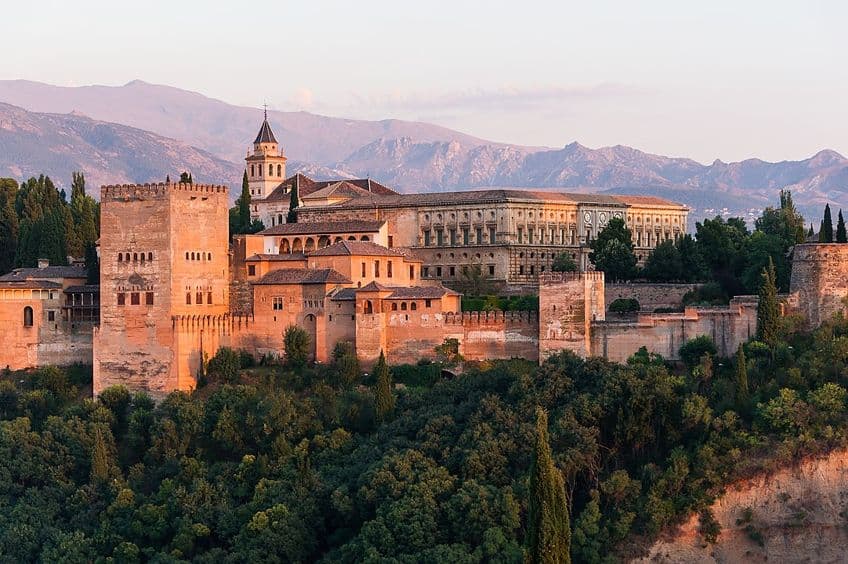
Fortress of Suomenlinna (Mid-18th century) – Finland
| Dates | Mid-18th century |
| Location | Helsinki, Finland |
| Materials | Stone, brick, wood, and metal |
The Fortress of Suomenlinna, built in the mid-18th century, is a UNESCO-listed sea fortress located in Finland. Strategically positioned on a cluster of islands near Helsinki, it was originally constructed by the Swedes as a naval base and defense against Russian expansion.
The fortress’s fortifications, including walls, bastions, and tunnels, highlight the military engineering of the era and its significance in Finnish history as a maritime stronghold.

Neuschwanstein Castle (19th century) – Germany
| Dates | 19th century |
| Location | Bavaria, Germany |
| Materials | Stone, brick, and wood |
Neuschwanstein Castle, constructed in the 19th century, is a fairy-tale-inspired palace nestled in the Bavarian Alps of Germany. Commissioned by King Ludwig II of Bavaria, it blends romanticized medieval architecture with modern amenities of the time.
The castle’s picturesque towers, ornate interiors, and scenic surroundings make it a symbol of fantasy and architectural romanticism, attracting millions of visitors annually as one of Germany’s most iconic landmarks.
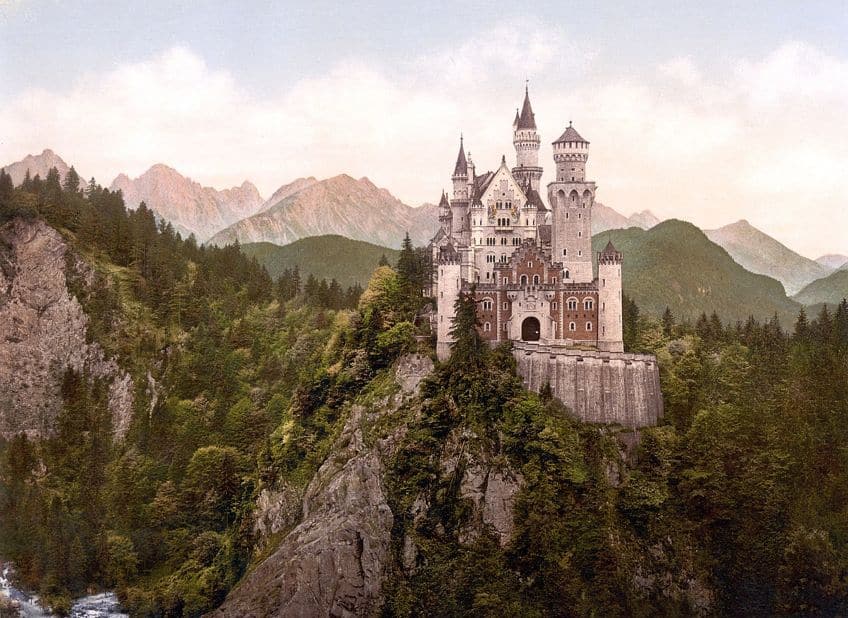
As we conclude our exploration of the world’s most famous fortresses, it’s evident that these architectural marvels transcend mere defensive structures; they embody the rich tapestry of human history, resilience, and innovation. From the towering walls of the Great Wall of China to the medieval splendor of the Alhambra, each fortress stands as a testament to the ingenuity and strategic foresight of past civilizations. As we marvel at their grandeur and significance, let us also reflect on the enduring legacy of fortresses, reminding us of the complex interplay between architecture, history, and the human spirit.
Frequently Asked Questions
What Is the Oldest Fortress in the World?
The oldest known fortress is believed to be the Citadel of Aleppo in Syria, dating back to at least the 3rd millennium BCE. It served as a strategic military stronghold and a center of political power for various civilizations throughout history.
What Is the Largest Fortress in Europe?
Malbork Castle in Poland is considered one of the largest fortresses in Europe. Built by the Teutonic Order in the 13th century, its extensive walls and structures cover an area of over 50 acres, making it a monumental example of medieval brick Gothic architecture.
Which Fortress Is Known As the Key to the Mediterranean?
The Krak des Chevaliers in Syria is often referred to as the Key to the Mediterranean due to its strategic location controlling access to important trade routes. This Crusader fortress played a crucial role in medieval conflicts in the region.
What Is the Most Visited Castle in Germany?
Neuschwanstein Castle, located in Bavaria, Germany, is one of the most visited castles in the country. Its fairy-tale appearance and association with King Ludwig II attract millions of tourists annually, making it an iconic symbol of romantic architecture.
Isabella studied at the University of Cape Town in South Africa and graduated with a Bachelor of Arts majoring in English Literature & Language and Psychology. Throughout her undergraduate years, she took Art History as an additional subject and absolutely loved it. Building on from her art history knowledge that began in high school, art has always been a particular area of fascination for her. From learning about artworks previously unknown to her, or sharpening her existing understanding of specific works, the ability to continue learning within this interesting sphere excites her greatly.
Her focal points of interest in art history encompass profiling specific artists and art movements, as it is these areas where she is able to really dig deep into the rich narrative of the art world. Additionally, she particularly enjoys exploring the different artistic styles of the 20th century, as well as the important impact that female artists have had on the development of art history.
Learn more about Isabella Meyer and the Art in Context Team.
Cite this Article
Isabella, Meyer, “Famous Fortresses – 10 Examples of Historical Engineering.” Art in Context. April 11, 2024. URL: https://artincontext.org/famous-fortresses/
Meyer, I. (2024, 11 April). Famous Fortresses – 10 Examples of Historical Engineering. Art in Context. https://artincontext.org/famous-fortresses/
Meyer, Isabella. “Famous Fortresses – 10 Examples of Historical Engineering.” Art in Context, April 11, 2024. https://artincontext.org/famous-fortresses/.







